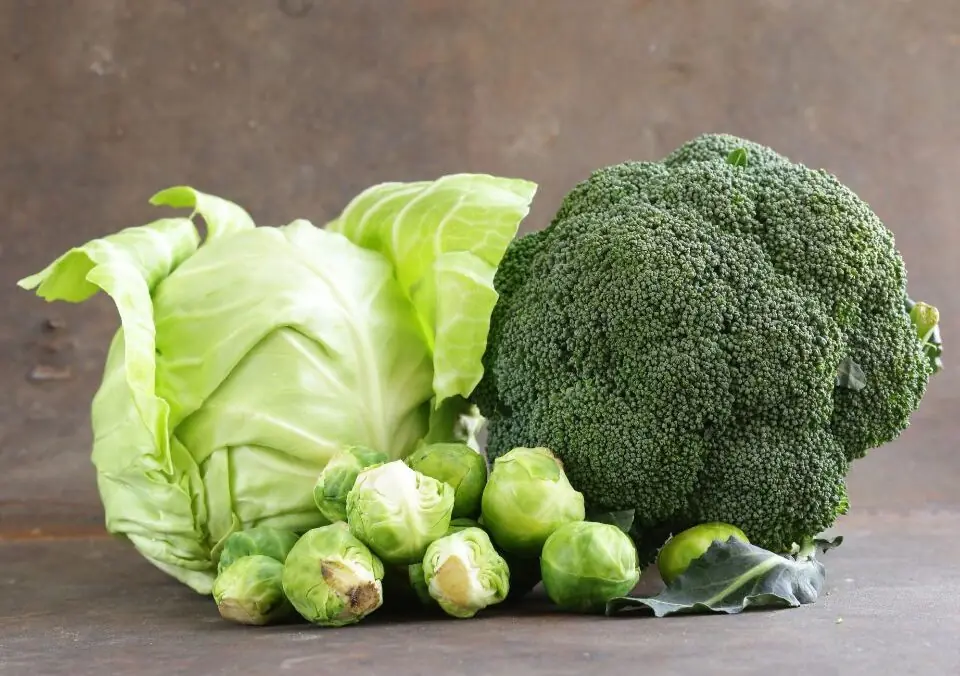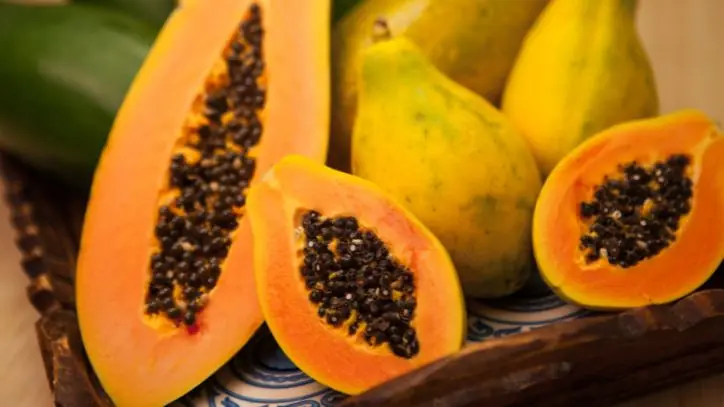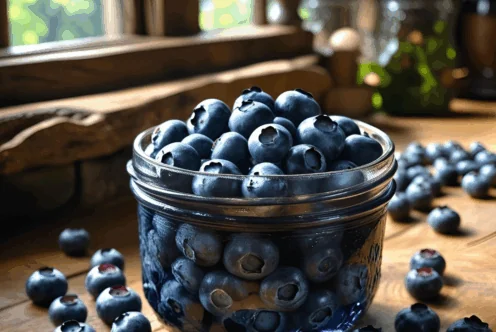Blog
Citrus isn’t the Only Source of Vitamin C!

Whenever cold and flu season rolls around, we all scramble to stock up on vitamin C supplements, hoping to boost our immune systems and dodge the latest bug making its rounds. However, it’s essential to recognize that vitamin C plays a vital role in our overall health year-round, not just during peak cold and flu times. Beyond its well-known association with immunity, vitamin C offers so much more; it’s crucial for the health of our skin, connective tissues, and bones.
Per the Cleveland Clinic, vitamin C is a powerful antioxidant that helps combat oxidative stress in our bodies, which can lead to chronic diseases. Moreover, it is an essential nutrient, meaning our bodies cannot produce it on their own. Instead, we must obtain our required vitamin C through the foods we consume.
When we think of vitamin C-rich foods, citrus fruits like oranges, lemons, limes, and grapefruits are often the first to pop into mind. This association is understandable, especially given the abundance of citrus produced in regions like Arizona. However, it’s important to broaden our understanding of vitamin C sources. Many other foods boast impressive amounts of this vital vitamin, and actively incorporating a variety of these options can enhance your health significantly.
The Importance of Vitamin C
Vitamin C, also known as ascorbic acid, is an essential nutrient necessary for several bodily functions. It helps synthesize collagen, which is vital for the structure and integrity of skin, ligaments, and blood vessels. Additionally, it promotes healing and aids in the absorption of iron from plant-based foods, while also contributing to brain health and potentially lowering the risk of chronic diseases.
Immune Function
One of the most recognized benefits of vitamin C is its role in supporting the immune system. According to a published study, vitamin C plays a significant role in the functioning of various immune cells, enhancing their ability to protect the body against pathogens. This is why many people reach for vitamin C at the first sign of a cold; it can enhance the immune response and may shorten the duration of illness.
Antioxidant Properties
Besides its immune-boosting effects, vitamin C acts as a powerful antioxidant. Antioxidants help protect the body from damage caused by free radicals, unstable molecules that can contribute to cellular damage and the development of diseases such as cancer and heart disease. In a comprehensive review published in the journal Frontiers in Nutrition, researchers found that adequate vitamin C intake is associated with a reduced risk of chronic diseases.
Vitamin C-Rich Foods Beyond Citrus
While oranges and grapefruits are popular vitamin C sources, don’t limit yourself to these fruits. A wide variety of fruits and vegetables are packed with vitamin C. Let’s explore some of these delicious options in greater detail:
1. Cruciferous Vegetables
Cruciferous vegetables like broccoli, cauliflower, brussels sprouts, cabbage, and kale are not only nutritious but also rich in vitamin C. For instance, one cup of raw broccoli contains about 81 mg of vitamin C, which is roughly 90% of the daily recommended intake for adults. These vegetables are versatile and can be incorporated into salads, stir-fries, or steamed as a side dish.
2. White Potatoes
Unexpectedly, white potatoes are also an excellent source of vitamin C. A medium-sized potato with the skin provides approximately 30 mg of vitamin C, which can contribute significantly to your daily intake. They can be baked, mashed, or roasted, making them a beloved staple for many.
3. Red Peppers
Red bell peppers are one of the most remarkable sources of vitamin C. Just one medium-sized red pepper delivers around 152 mg of vitamin C, exceeding the daily requirement! This vibrant vegetable can add crunch and color to salads, sandwiches, and stir-fries.
4. Strawberries
Berries, particularly strawberries, are not only delicious but also a great source of vitamin C. One cup of halved strawberries contains about 89 mg of vitamin C. They can be enjoyed fresh, blended into smoothies, or added to desserts and salads.
5. Papaya
Papaya is another tropical fruit that is rich in vitamin C. One small papaya offers around 95 mg of vitamin C. It’s also high in fiber and contains enzymes that aid digestion. Papaya can be eaten raw, in fruit salads, or blended into smoothies.

6. Guava
Guava is a lesser-known fruit that boasts an impressive vitamin C content. Just one guava provides around 126 mg of vitamin C. This exotic fruit can be eaten fresh or used to make juices and desserts.
7. Cantaloupe
Cantaloupe is not only refreshing but also provides a good amount of vitamin C. One cup of cubed cantaloupe has about 56 mg of vitamin C, making it a great addition to fruit salads and smoothies.
8. Tomatoes
Tomatoes are a daily staple for many and provide a decent source of vitamin C. A medium tomato contains approximately 24 mg of vitamin C. Whether you enjoy them in salads, sauces, or sandwiches, incorporating tomatoes into your meals can help boost your vitamin C intake.
9. Kiwis
Kiwis are small fruits that pack a vitamin C punch. One medium kiwi contains around 71 mg of vitamin C. Their sweet-tart flavor makes them a delightful addition to fruit salads or smoothies.
Supporting Local Farmers and Health Benefits
Arizona agriculture is rich in varieties of vitamin C-rich foods. By choosing locally grown produce, you not only benefit from fresh, seasonal fruits and vegetables but also support local farmers and the economy. Farmers’ markets and local grocery stores often carry produce from nearby farms, providing an opportunity to consume high-quality, fresh ingredients while promoting sustainable agriculture.
Eating locally and seasonally can also enhance the nutrient content of your food. Freshly picked fruits and vegetables retain more vitamins than those that have been shipped from across the country and stored for extended periods. Additionally, supporting local agriculture encourages biodiversity and may reduce the environmental impact associated with transportation.
Incorporating Vitamin C into Your Diet
Incorporating a variety of vitamin C-rich foods into your diet can be simple and enjoyable. Here are some tips:
- Start your day with a smoothie: Blend a kiwi, some strawberries, and a handful of spinach for a nutrient-packed breakfast.
- Snack on red peppers: Cut up some red bell pepper slices and pair them with hummus for a crunchy, healthy snack.
- Whip up a salad: Create a colorful salad with mixed greens, cherry tomatoes, broccoli, and grilled chicken, topped with a tangy citrus vinaigrette.
- Make a fruit salad: Combine guava, papaya, and cantaloupe for a refreshing, vitamin C-rich dessert.
- Experiment with stir-fries: Incorporate a mix of cruciferous vegetables into your stir-fries for a delicious and healthy side dish.
Conclusion
Vitamin C is a cornerstone of good health, essential for immune function, antioxidant protection, and maintaining overall well-being. While citrus fruits are often highlighted for their vitamin C content, many other fruits and vegetables offer ample amounts. By diversifying your diet with various vitamin C-rich foods, you can support your health throughout the year.
With Arizona’s rich agricultural landscape, it’s an excellent opportunity to discover locally grown fruits and vegetables that provide not just the health benefits of vitamin C but also the satisfaction of supporting local farmers. So, next time you’re grocery shopping or visiting a farmers’ market, remember to explore the impressive variety of vitamin C-rich foods that extend beyond citrus. Enjoy the flavors, support your local community, and boost your health all at once!
By Heide Kennedy, Arizona Farm Bureau Communications Intern


















